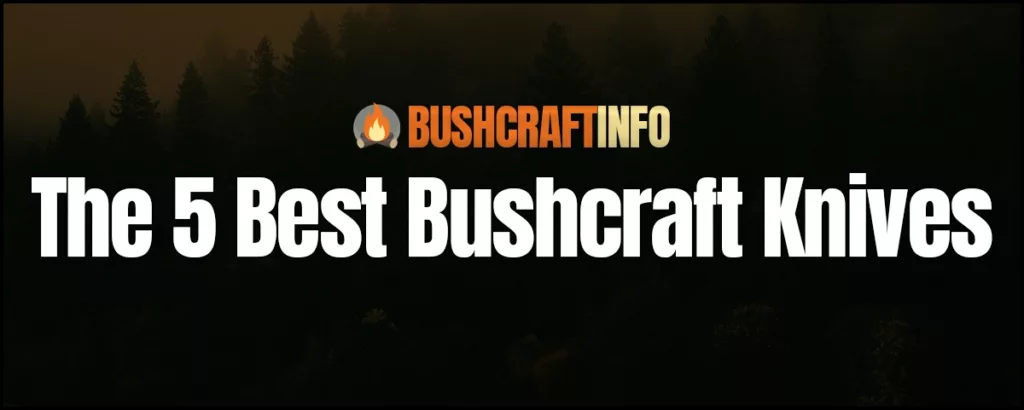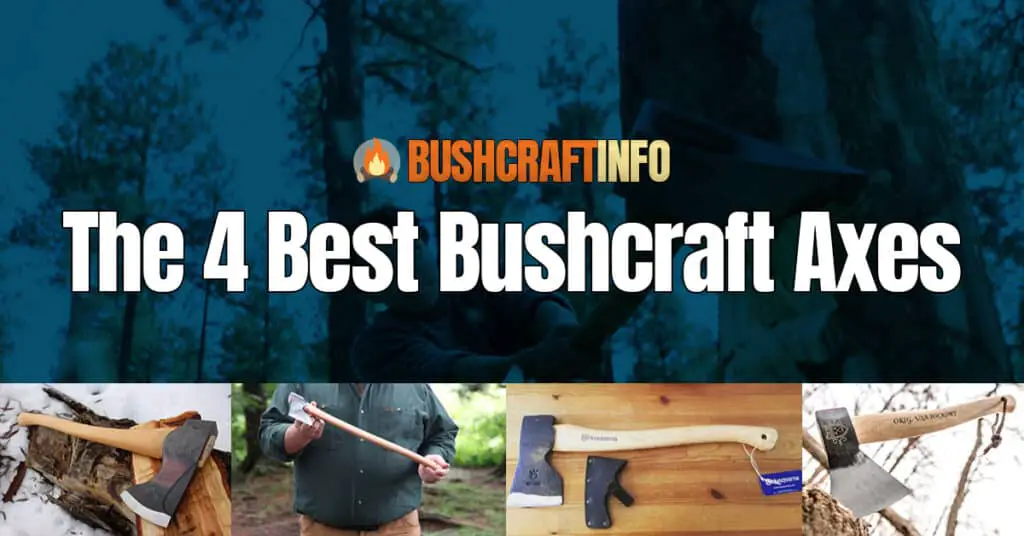Are you confused when choosing the right kind of knife for your upcoming bushcraft adventure? Don’t know which one to go for when it comes to a bushcraft knife vs a survival knife? If yes, then you have come to the right place.
In this article, I will not only tell you how bushcraft knives are different from survival knives but will also tell you how to pick the right one for the situation. Additionally, I will give you some simple tips which will help you differentiate between survival and bushcraft knives.
So if you are interested in learning all this, then keep on reading!
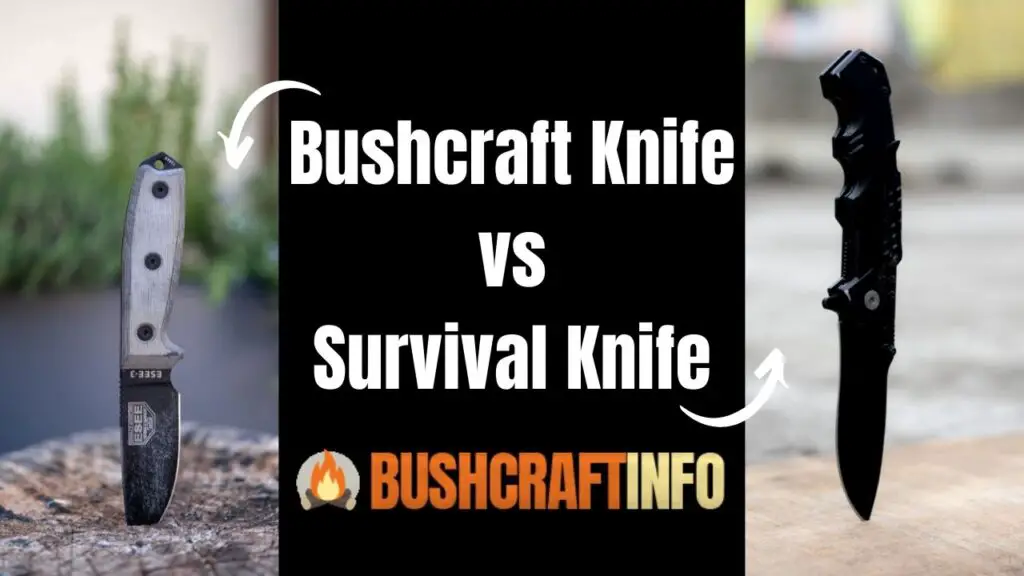
What’s the Difference Between a Bushcraft Knife and a Survival Knife?
First of all, let me start by telling you what is a bushcraft knife and what is a survival knife. A bushcraft knife is generally used for hunting or fishing while a survival knife is used for self-defense purposes. So basically, they each serve different functions.
A bushcraft knife has a sharp blade and is designed with a pointy tip so as to be able to cut through things like vines and branches. It can also be used for skinning animals and other tasks.
On the other hand, a survival knife has a sharp pointy tip and is usually made out of metal or carbon steel. It also consists of a heavy handle that helps the knife to be helpful in additional tasks such as hammering, batoning, etc.
It is mainly used for self-defense and is very handy during an emergency. Now that we have understood what these two types of knives are, let us discuss their differences.
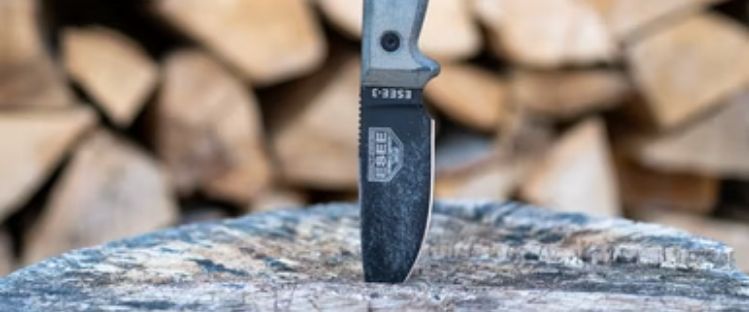
Differences Between Bushcraft Knives and Survival Knives
1) Blade Length
The length of the blade determines whether it is a bushcraft knife or a survival knife. Generally speaking, a bushcraft knife has a shorter blade than a survival knife. This is because a bushcraft knife can be used for multiple purposes such as cutting wood, skinning animals, etc.
Whereas, a survival knife is specifically designed to kill people or animals. Therefore, its blade should be long enough to make sure that it does the most damage to the target.
2) Pointed Tip
The sharp edge of a bushcraft knife makes it easier to cut through thick branches and foliage. However, a survival knife has no such feature. Because it is meant to be used for self-defense, it needs to have a pointy tip to ensure that it pierces through any attacker who tries to attack you.
3) Handle Material
Bushcraft knives are usually made out of plastic, aluminum, or wood whereas survival knives are usually made out of stainless steel or carbon steel. Plastic handles are more durable than wooden ones.
Also, aluminum handles are lighter than those made out of wood. In addition to that, aluminum handles are also cheaper than wooden ones.
4) Weight
Bushcraft knives weigh less than survival knives. This is because they are mostly made out of carbon steel. Whereas, survival knives are made out of high-quality materials like titanium and stainless steel.
These blades are heavier than those made out of carbon steel and therefore, require more effort when using them. But on the brighter side, these knives can be used for several other applications instead of just cutting.
5) Price
Bushcraft knives cost much less than survival knives because they are made out of cheap metals like iron and steel. However, this is not true in all cases as there are some excellent quality bushcraft knives available on the market such as carbon steel knives, etc.
But in general, bushcraft knives are not as durable as survival knives because survival knives are meant to withstand tough environments. Therefore, it needs to be of very high quality, which ensures that the knife doesn’t break easily during a survival situation.
Due to this reason, the price of a survival knife is usually much higher than that of the bushcrafting knives.
6) Durability
Survival knives are more durable than bushcraft knives. Because they are made out of high-quality materials like stainless steel, they last longer than bushcraft knives. They can even survive being dropped from great heights.
Having that said, the bushcraft knives are also tough and can serve you very well. However, they are not as durable as the survival ones.
7) Edge Quality
A bushcraft knife’s edge is sharper than a survival knife’s one. This is because bushcraft knives are used to cut tree branches, collect wood for a campfire, process food, slaughter animals, etc. Whereas survival knives have more pointy and durable tips to make sure that the knife is always ready for attack.
Although survival knives such as Gerber knives (the one used by Bear Grylls in the Man vs. Wild TV show) are also very good for bushcrafting situations. However, the main purpose of these knives is self-defense during wilderness and survival situations.
8) Applications
Bushcraft knives are used for a lot of activities such as cutting down tree branches, clearing bushes, skinning and slaughtering animals, etc. However, a survival knife can help you accomplish an equal amount of tasks along with some others.
As mentioned already, the handle of a survival knife is usually heavy as compared to a bushcraft knife. This heavy weight of the handle allows it to be used as a hammer whenever needed. It will help you in batoning and hammering tasks like a charm.
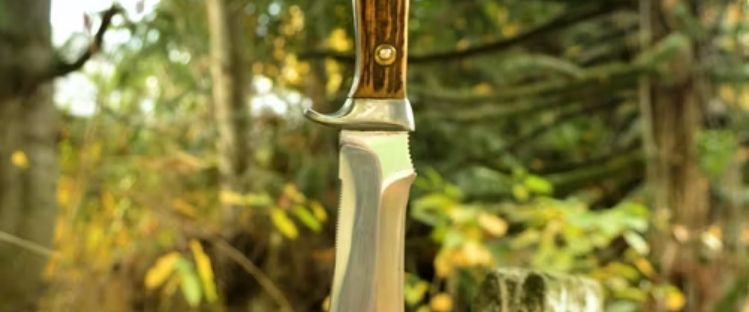
Characteristics of a Bushcraft Knife
- It should be lightweight so that it can be carried around easily.
- It should be small enough to fit into your pocket.
- It should be easy to use.
- It should be able to open quickly.
- It should be easy for you to sharpen.
- It should be easy and comfortable to hold.
- It should be easy enough to clean.
- It should be affordable.
- It should be strong enough to perform its intended tasks.
- It should be safe enough to carry around.
- It should be simple enough to maintain.
- It should be versatile enough to do many things.
- It should be sharp enough to get the job done.
- It should be sturdy enough to handle various conditions.
- It should be light enough to carry around.
Characteristics of a Survival Knife
- It should have a blade with a serrated edge.
- It shouldn’t be too heavy.
- It shouldn’t be difficult to use.
- It should be easy to sharpen.
- It shouldn’t be expensive.
- It should be able to do multiple jobs.
- It should be able to do any task.
- It should be able to stand up to rough conditions.
- It should be able to resist corrosion.
- It shouldn’t rust or corrode.
- It shouldn’t break easily.
- It shouldn’t require special tools to repair.
- It shouldn’t need to be replaced often.
- It shouldn’t be hard to find replacement parts.
- It should be able to withstand extreme temperatures.
Bushcraft Knife vs Survival Knife: Which is Hard to Sharpen?
Bushcraft knives are easy to sharpen because their blades are made of softer materials like carbon steel. However, survival knives are a bit harder to sharpen because their blades are made of harder materials like stainless steel.
This is the main reason why bushcraft knives can get dull quickly while survival knives can retain their sharpness for a longer period of time.
Bushcraft Knife vs Survival Knife: Which is More Durable?
Bushcraft knives are not as durable as survival knives. This is because they are made out of softer materials that can easily get damaged. Survival knives, on the other hand, are made out of harder materials that can withstand a lot of wear and tear.
If you are looking for a knife that can last long, then you should go for a survival knife. However, if you are looking for a knife that is easy to carry around and is good for everyday tasks, then you should go for a bushcraft knife.
Bushcraft Knife vs Survival Knife: Which is More Affordable?
Bushcraft knives are more affordable than survival knives. This is because they are made out of cheaper materials. Survival knives, on the other hand, are made out of harder and more expensive materials.
If you are looking for an affordable knife that can withstand a lot of abuse, then you should go for a survival knife. However, if you are looking for an affordable knife that is good for everyday tasks, then you should go for a bushcraft knife.
Bushcraft Knife vs Survival Knife: Which is More Versatile?
Survival knives are more versatile than bushcraft knives. This is because they can be used for a variety of tasks. Bushcraft knives, on the other hand, are more specialized and can only be used for certain tasks.
If you are looking for a knife that can do multiple jobs, then you should go for a survival knife. However, if you are looking for a knife that is good for a specific task, then you should go for a bushcraft knife.
Are Survival Knives Easier to Carry Than Bushcraft Knives?
The next question that you might be asking about is whether survival knives are easier to carry than bushcraft knives. The answer to this question is yes, bushcraft knives are easier to carry than survival knives.
By easier to carry, I mean they can easily fit in your pocket due to their smaller size. Although there are some bigger bushcraft knives, most of them will still easily fit in your backpack or your knife sheath.
While on the other hand, survival knives are heavier and a bit harder to carry around because of their larger size. So, if you are looking for a knife that is easy to carry around, then you should go for a bushcraft knife.
Do You Need Any Special Skills to Use a Survival Knife?
Yes, survival knives are mainly made for self-defense and survival situations. Therefore, you may need special skills to use these kinds of knives such as how to start a fire using the top portion of your knife.
Or you may also need to learn how to properly use the handle of your knife for hammering and batoning-related tasks. Besides that, knife throwing is another skill that you may need while in the wilderness.
Sometimes you will need to throw your knife for hunting or protecting yourself. It may seem a very easy task to do but, trust me, it requires a lot of skill, otherwise, you may end up hitting your target with the handle of your knife.
Best Knife for Handling a Survival Situation
While doing some research for the best knife that can help you in a survival situation, I found quite a promising tool from Gerber. This specific knife comes with a fire starter that allows you to start a fire just about anywhere you are without any issue at all.
However, the fire starter alone is not the reason due to which I have selected this knife. There are some other reasons too, such as being extremely lightweight. This knife consists of stainless steel and a rubber handle that makes a great combo.
In addition to being lightweight, the knife also comes with a whistle that can be very handy for signaling during survival and life-threatening situations. There’s also a durable nylon sheath that can easily be attached to your belt or backpack.
You can check more details about the Gerber Gear Ultimate Knife Here
Best Knife for Bushcraft Situations
For bushcraft situations, you will need something small, sleek, easy to carry, and durable. Your primary concern in a bushcraft situation is making kindling and cutting small branches for use as tinder, so you don’t want a big imposing knife.
The BigCat – Handmade Damascus Hunting Knife is an excellent bushcraft blade that fits these parameters. Made of high carbon Damascus steel, the BigCat is very strong and durable. The blade is also very keen and will easily slice through small branches.
The knife also features a comfortable hardwood handle that makes it easy to grip even when wet. And at just 6.5″ in length, it’s easy to carry in a pocket or backpack.
To learn more, check out the BigCat – Handmade Damascus Hunting Knife on Amazon.
Final Words
To conclude the above article, bushcraft knives are great for everyday carry and easy to use, whereas survival knives come in handy when you are in a difficult or dangerous situation.
With the right skills, either knife can be lethal in the right hands. However, if you are looking for a knife that is easy to carry and doesn’t require any special skills, then I would suggest opting for a bushcraft knife.
Bushcraft knives are smaller than survival knives and can easily fit in your backpack or pocket. Survival knives are heavier and larger, making them more difficult to carry around.
However, both come with their own set of pros and cons, therefore you will have to decide based on your applications. I hope you’ve enjoyed reading this article. If you enjoyed reading, please don’t forget to share this article with your friends and family too.
Was this post helpful?

Hey I’m Josh! I have been practicing Bushcraft for a little over 6 years now! I Started this website to review awesome bushcraft gear that I love as well as share information I have learned along the way!

